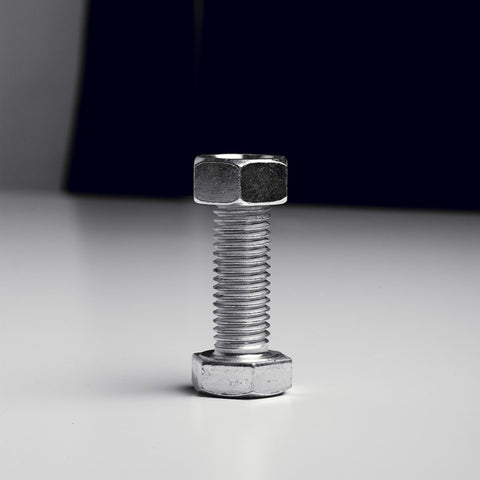Zinc plating is one of the most prevalent applications of electroplating. Its core purpose is to deliver a protective coating to metal accessories such as fasteners, bolts, nuts, and automotive parts. Zinc can keep the underlying iron and steel from corroding. It can also enhance the appearance of metal components by giving them a range of colors and brightness and an elegant shine.

(Pixabay / andreas160578)
Records show that zinc was mined and smelted in India as early as the 9th century B.C. At first, ancient people mixed zinc ores with copper to make brass. Hundreds of years later, zinc was accepted and used as a metal in its own right. Nowadays, the majority of zinc metal is utilized for galvanization. In fact, most electroplating companies will tell you that zinc plating is the most frequently used ways to galvanize a metal surface in order to protect it from rust.
Zinc Plating in 5 Steps
Zinc electroplating is essentially a technical process that demands a high level of skill. The user also needs special machinery and equipment, including an ancillary tank (for the dissolution of the anode of zinc), a rectifier, a reservoir and a plating station. Below is a detailed breakdown of how zinc plating is performed.
1. Cleaning the Surface
This is done to eliminate any rust, oil, and dirt from the substrate. It’s best to use an alkaline detergent to ensure the zinc plating remains intact for a good period of time. Inadequate cleaning can lead to defects like blistering or peeling. The cleaning process involves putting the metal in a bath for 5-10 minutes at 150 to 200° F to take out the dirt. This is followed by an acid treatment that helps eliminate surface rust. Some vendors will also use an electrocleaner for micro-level cleaning, applying an electric charge to the metal at its anode or cathode end.
2. Setting Up the Electrolyte Solution
In zinc plating, the user has to immerse the substrate into a unique electrolyte solution, which is also known as the plating bath. The bath usually features various chemicals and a zinc metal ionic solution that helps streamline the plating procedures. They can also generate the desired physical and chemical characteristics of the final product.
3. Zinc Plating
After the first two steps are completed, you are ready to zinc plate the components. First up, a DC (direct current) will be applied at the anode end for a fixed period of time. This results in the deposition of the zinc ions on the surface of the metal (the cathode end). Uniformity in zinc electroplating can be achieved by positioning the cathode and the anode suitably into an aqueous solution while ensuring the current proportionately flows over the whole area of the surface.
Note: There are two methods to zinc plating: rack plating and barrel plating. The former method is suitable where larger parts are concerned. The components are attached to racks and immersed in a plating bath. They remain stationary during the plating process. Barrel plating, on the other hand, is used where parts are small. They are placed inside a barrel and then rotated to achieve a uniform finish.
4. Using Chemical Agents
Vendors leverage a range of chemical agents alongside zinc plating to deliver the desired physical and chemical traits of the final product. These can be altered by relevant variations in the chemical agent, electric charged used, length of soaking, and the temperature and time variables.
5. Caring for The Finished Product
As a general rule, it’s critical to wash the parts with water after every key step of the zinc plating process. Once the plating has been performed, it should be washed in a liquid container to eliminate potential surface contamination and then properly dried. Rinsing can also be performed multiple times in case of too much contamination. The parts would either be washed under running water or in a rinsing tank, based on the extent of the contamination. In scenarios where additional protection is needed, the use of sealers and passivates can be included in the post-treatment procedure.
Benefits of Zinc Plating
The core benefits of zinc electroplating pertain to the simplicity of its application and cost-effectiveness. The procedure offers an elegant finish to the metals and can be done in a plethora of colors. In fact, it can also be utilized as an “undercoat” for standard paints. Plus, it has industry-leading adhesive and ductile properties. Besides all that, zinc is a bio-friendly alternative to cadmium, which is a “highly toxic substance and can result in a poisoning effect over a lengthy period of time.
Drawbacks of Zinc Plating
There aren’t many disadvantages to zinc, but it’s important to know that the durability of zinc decreases in seawater. Also, depending on the shape of the metal being plated. you may not be able to achieve uniform thickness. While zinc would have no problems coating the visible parts of the metal components, it may not adhere as well to the internal parts of the product.
Assessing the Results of Zinc Plating
When it comes to evaluating the effectiveness of zinc electroplating (or the ability of the substrate to resist corrosion), salt spray testing is the best method to use. This involves exposing the zinc components to a 5 percent salt solution to see how the components hold up over time. The procedure records the time it takes for a “white rust” to appear, which is a powdery substance that can form on zinc-coated steel. This shows whether or not the plating needs to be modified to comply with the desired manufacturing standards.
Conclusion
That ends our explanation of the zinc plating process. Remember, zinc is usually alloyed with other metal types, which can lead to better performance than when zinc is plated alone. Gold jewelry, for instance, is often a mixture of gold and various other metals, including zinc, nickel, copper and silver.
To learn more about plating kits for jewelry, guns, metal components, PCBs, or other applications, contact Gold Plating Services. Find out about our benchtop kits for hobbyists and professionals alike as well as our customizable gold plating services.
